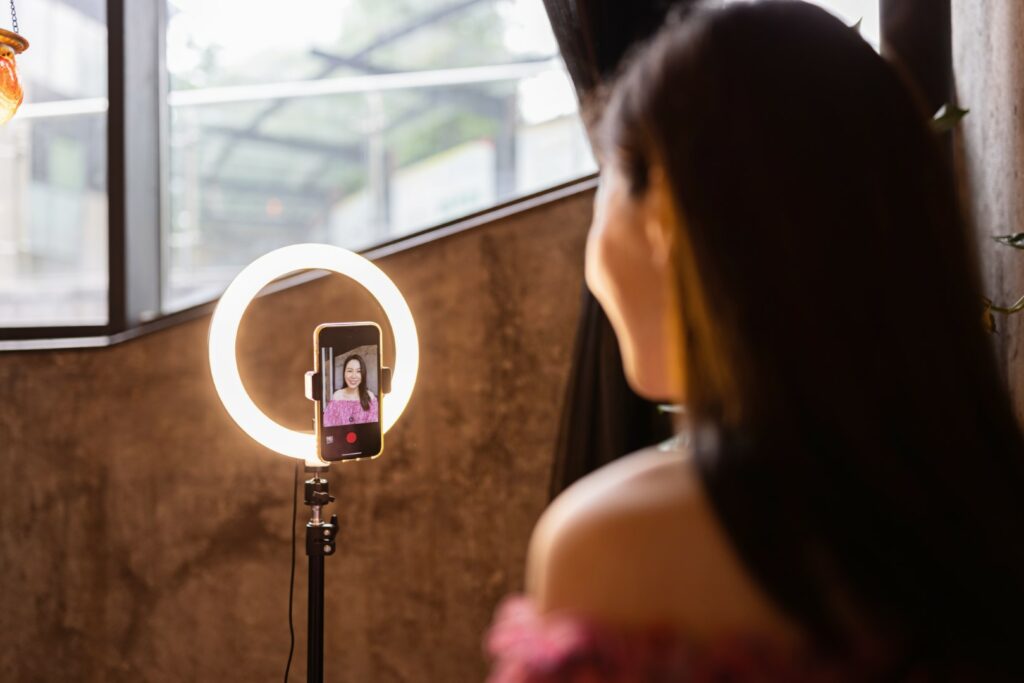How Beyoncé inspired a global Virgin Mary phenomenon on TikTok
How Beyoncé inspired a global Virgin Mary phenomenon on TikTok
This guest article was written by Daniela Baptista Torres, a student at Lund University.
Beyoncé’s outfit with halo at the 2017 Grammy Awards inspired a TikTok filter depicting the Virgin Mary. How can social media reimagine religious figures?
The inconspicuous forms of religion on TikTok
TikTok is a platform meant for the creation and sharing of short videos. To better understand the medium, imagine the mix between Instagram, YouTube, and the short form of Twitter. It is the new kid on the block, and it came to change the world. TikTok has grown at an unprecedently rapid pace and, from 2018, has been increasing its public in nearly all age groups, although especially younger generations.
Like all the mass media or social network platforms, TikTok saw the emergence of religious imagery, which often comes in inconspicuous forms. An excellent example of that is the video effect of the Virgin Mary. The effect allows the user to upload images or videos and add two elements: a halo and sad eyes with tears. Its creator, @paula.casado_, explains in Spanish that the effect was intended to be utilised for Holy Week. Its provenience is clearly Catholic, with roots in either Latin America or Latin Europe, where the Virgin has a unique and important role in society.
Virgin Mary as a popular figure
According to Janneth Rodriguez (2020), there are two views on the Virgin Mary: the official Church version, of a believer and an obedient woman, and the second, a Mary of the people, that responds to the cry of the poor and the needed, who share in her suffering. The constant suffering and struggle of the Virgin, adding to the resemblance to important female mother characters in original cultures in Latin America, has reached the most intrinsic of the Latin American communities (that constitute most of the Spanish speakers in the world) and therefore strengthening in a unique way the role of the Virgin Mary. That is because the Virgin Mary represents the suffering and devotion to God, as she endured extreme poverty, the death of her son and refugee status, always trusting God (Rodriguez, J. 2020). The three apparitions, recognised by the Catholic Church (In Mexico City as our Lady of Guadalupe (1531), in south France as our lady of Lourdes (1858) and in Portugal as our lady of Fatima (1917) (Rodriguez, J. 2020)) solidified her position in Latin countries.
More than religious context
The halo, also called nimbus, is a radiant crown on the head of a holy person that represents their spirituality through the symbolism of light. Despite pagan origins, since about the 6th century, the halo started to be used in representations of the Virgin Mary and other saints.
But TikTok has been inspired by more than just religious imagery. @paula.casado_ explained that the halo used in the TikTok filter was taken from Beyoncé’s outfit at the Grammys 2017. Beyoncé Knowles is a famous American singer and songwriter that continuously uses religious symbolism, especially the representations of the Virgin Mary. During the Grammy Awards of 2017, she wore a golden halo/crown with a golden outfit.
The syncretism of Beyoncé’s outfit
Beyoncé’s outfit looks like a syncretism between a halo and a crown, which is not uncommon in the representation of the Virgin Mary. It refers to the notion of the Virgin Mary as a queen, which was promoted in 1954 by the Catholic Church, including Pope Pius XII, and it comes from the idea that if Jesus (son of the Virgin Mary) is the King of Israel and the heavenly king of the universe, then it is only natural that his mother the Virgin Mary is Queen of Heaven. Therefore, we can take this as another clue to the Catholic identity of this imagery (National shrine, 2020).
While the exact provenience of Beyoncé’s outfit is unknown, according to Morgan Baila (2017), the biggest reference in Beyoncé’s outfit is to Oshun, the Goddess of love and beauty from the Yoruba people in southwestern Nigeria. She is also associated with water, purity, femininity, the power of women and fertility (Jeffries, B. S), which might have related to the fact that Beyoncé was pregnant with twins in 2017. It is also important to note that Oshun is depicted wearing gold and yellow, dressed in a golden crown, which is mimicked closely by Beyoncé’s outfit.
Popular culture meets popular devotion
But there are also other connotations brought by Beyoncé’s outfit, in ways that reminded people of Our Lady of the Gate of Dawn, commonly known as one of the Black Madonnas. This prominent Christian icon depicting the Virgin Mary is located in the Chapel of the Gate of Dawn in Vilnius, Lithuania. It was most probably completed in 1630 in a Northern Renaissance style. In 1671 the painting was covered in silver and gold, leaving only the face and hands uncovered. In 1927, Pope Pius XI canonically crowned the image. Curiously, the Virgin Mary is depicted alone without Jesus and it is one of the most important places for pilgrimage for the Virgin’s devotees.
Beyoncé’s outfit is a perfect example of syncretism in popular culture, but the TikTok effect brings even more references. While the effect’s crown has been copied from Beyoncé’s outfit, the sad eyes and tears refer to the popular devotion. As the effect was supposed to be used during the Holy Week, we can assume that it tries to convey the suffering of the Virgin Mary with the death of her son, Jesus.
A banal religious symbol?
While bringing multiple religious references, the TikTok effect, through its association with a pop figure like Beyoncé, is meant to be more entertaining than divinating, capitalising on common religious symbolism. A result of syncretism employed by popular culture, it can be considered an example of a banal religious representation. The use of banal religious symbolism is not unique to TikTok. It is widespread in a wide variety of media. They create, reshape, and reimagine traditional figures, giving them new life and setting them in novel contexts.
Daniela Baptista Torres






